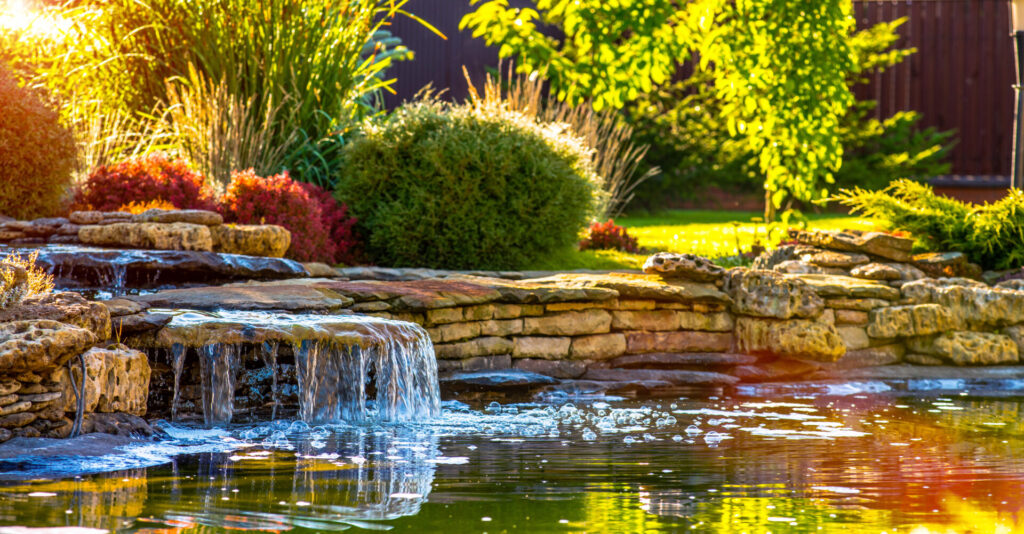There’s a reassuring upside when you execute a strategic landscape design: It can save your house from burning down. Who knew yard work could be so empowering?
It matters. More than ever, country-wide, wildfires are part of life. Climate change, population growth and urban sprawl mean we need to live smarter in our famously natural Canadian landscape.
That starts right in our own backyards. We can all take proactive, preventative measures to reduce the wildfire risk to our homes and our communities. Here’s how to go about it:
Heed the Home Ignition Zone (HIZ)
When planning what landscaping to do on your property, acquaint yourself with the space within 30 metres of your home. Called the HIZ, it’s divided into three areas requiring specific action. The Immediate Zone encompasses your home, attached structures and the area extending 1.5 metres from there. The Intermediate Zone continues from 1.5 to 10 metres, followed by the Extended Zone that stretches from 10 to 30 metres.
Work from the inside out
A crucial buffer against fire risk, the Immediate Zone is top priority. Remove vegetation, such as shrubs, plants, organic mulch and tree branches, and all combustibles (including that jute doormat) from the 1.5-metre area surrounding your house and attached structures. In place of shrubs and greenery, you can get creative with rock mulch, paving stones, river rocks, flagstone and brick. If you absolutely must include something green, select a very few low, compact, fire-resistant plants that maintain high moisture content. Don’t use combustible mulch and do put plenty of space between plants or put them in non-flammable pots.
Use space wisely
Vegetation is fuel for fire, so you also need to be strategic about where you place landscape elements beyond the Immediate Zone. Vertical and horizontal space you create between plants helps slow or stop the spread of fire. To maintain vertical space, prune tree branches at least two metres from the ground and reduce the height of other plants near trees. To maintain horizontal space, thin or remove sections of dense greenery and make room around all your plants and shrubs. You want to avoid continuous fuel beds.
Create fuel disruptions
Break up the lawn and large swaths of vegetation with flagstone walkways, brick paths, stone retaining walls or a dry stream bed.
Add water

Consider adding a water feature such as a pond, waterfall or water wall. This element can serve both as a fuel break and a focal point in your yard.
Use fire-resistant plants
There are plants with moist, supple leaves and little or no sap, resin, oil or wax that will thrive in the Hardiness Zone where you live. See the FireSmart Guide to Landscaping for details.
Replace high-risk foliage
For instance, as FireStart Canada notes, “Evergreen trees (with cones and needles) are highly flammable and should not be within 10 metres of your home.” When time and your budget allow, swap out the highly flammable species throughout your property with safer choices. Find out more via the FireSmart BC Landscaping Guide.
Keep flammables away from your home
Store flammables, such as firewood, away from your house and note that you may need a permit and definitely need to be cautious with a fire pit.
Replace other combustibles
The wood deck? The wood fence? The cedar privacy hedge? They all ignite. To mitigate short-term risk, remove combustible materials from under and around your deck and keep it in good repair. Switch the gate on your wood fence with a metal one. Long term? Replace the wood with other options such as stone or metal and investigate hedge alternatives via the Landscaping Best Practices guide.
Keep up with yard work
Mow the lawn shorter than 10 centimetres, clear away yard waste and make sure all plants are watered and healthy.
Review local bylaws
Check local bylaws before making major changes to your property. And remember: You don’t need to compromise on functionality or aesthetics when you update your home’s exterior to make it more resistant to embers and flames. You can have curb appeal while also curbing wildfire risk. Discover more ideas at FireSmart landscaping.
To learn more about keeping your home and property safe during wildfire season, check out more articles in CAA Magazine.

